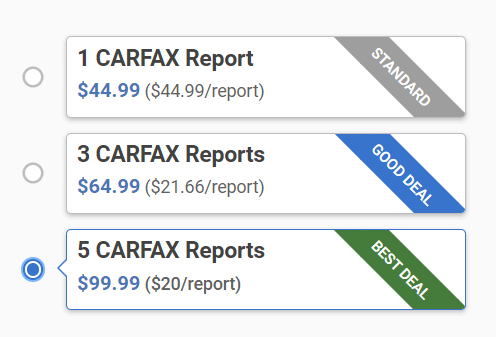No one wants to buy a defective or broken car. That is why we can say that buying an used car can feel like stepping into a battlefield. You never know what’s masked under that shiny, lustrous paint job. So, you came to the right place; this is where Carfax reports become your best friend. One of the most essential things you might come across in such a report is the term salvage title.
In this article, we will dive into a guide for salvage titles and the leading cause of them. Without further ado, lets check it!
What is Salvage Title?
A salvage title is a legal designation assigned to a vehicle when it has sustained significant damage or loss, making the cost of repairs higher than the car’s market value. This typically happens after major accidents, floods, fires, or theft recoveries.
Once an insurance company deems the vehicle a total loss, the state issues a salvage title to indicate that the car is no longer in its original, undamaged condition. This label serves as an official record to inform future buyers and owners about the vehicle’s past damage history. We recently found that 30% of the vehicles Carfax reports are found with salvage title out of 1000 reports.
What Does Salvage Title Say:
A salvage title is not the result of a collision. In many states, a vehicle can also accept this label if it is rendered inoperable by severe weather events like floods or hurricanes. Extensive hail damage or even acts of vandalism may also lead to a salvage designation.
Common Causes for a Salvage Title:
- Big accidents or collisions.
- Natural disasters such as hail, floods, or hurricanes cause damage, and other like Fire damage.
- Stealing recovery (where the car was stolen and later found with damage or missing parts).
Note: If the salvage title is once issued, it remains with the vehicle’s history forever, even if the car is later repaired and made drivable again. Also learn about functional damage in Carfax report.
Why Does Salvage Title Appear in a Carfax Report?
A salvage title appears in a Carfax report when a vehicle has been declared a total loss by an insurance company due to severe damage from an accident, flood, fire, or theft recovery. Once this status is reported to the DMV, it becomes part of the car’s permanent record and is shared with vehicle history reports. You can easily copy the VIN of the car you are willing to check the salvage title on our cheap Carfax report tool and get your report in less than 10 seconds.
This designation alerts potential buyers that the car has undergone significant damage and have been rebuilt or repaired, which can impact its safety, reliability, and resale value. Essentially, the presence of a salvage title in a Carfax report is a warning sign to proceed with caution and investigate the vehicle’s history more thoroughly before making a purchase.
How Does a Car Become Salvage? Example that makes your mind clear:
Here’s a perfect example:
Let’s say your car price is $20,000. You get into an accident, and the repair cost is estimated at $9,000. Although technically, the car you have could be fixed, the insurance company determines that it’s not worth paying that much. They pay you what the car’s value is, take the damaged car, and mark it as salvage.
From there, the car might be sold at a salvage show or in an auction, but now with a permanent salvage history, it is difficult.
Is a Salvage Title Always Bad News?
Not necessarily, but it’s a warning sign that demands caution.
For example, some salvage cars are perfectly repaired, such a shiny appearance, and can be safe, affordable options for economically conscious buyers.
Others might be repaired just from the appearance, while concealing serious, faulty structural problems underneath.
Merits of Buying a Salvage Title Car:
- Lower cost (sometimes 20–50% cheaper than similar clean title cars)
- Possibility for the best deal if the restorations were done professionally
- Some cars are reported as salvage for exterior reasons (e.g., hail dents) but are mechanically sound.
Demerits of Buying a Salvage Title Car:
- Harder to certify (some insurers only offer limited coverage)
- Cheaper resale value.
- Likely undercover damage that could affect working.
What to Do if You See a Salvage Title in a Carfax Report
If you are buying a used car Carfax report showing a salvage title, here’s your checklist:
- Check Repair Records
Ask to see exactly what was damaged and how it was repaired. - Get a Trusted Mechanic
Take a trusted mechanic with you to check the vehicle thoroughly, especially the frame, perfect engine, and safety systems. - Consider the type of damage
Check the car to determine what type of damage is present. Flood-damaged cars, for example, can have long-term electrical issues even after repairs. - Make a Plan:
If you plan to retail a car in the future years, keep it that salvage cars have a cheaper retail value. - Review Insurance and financing options
Review the insurance and finance the car before dealing.
How CheapCarfax.net Helps You Spot Salvage Titles
Our place is CheapCarfax.net, our motto is to believe every car buyer deserves to know the whole story before confirming a deal. Our proper vehicle history report pull data from trusted sources, including title history, so you can quickly see if a car has ever been branded as salvage.
Final Thoughts
So, what is salvage title in a Carfax report? It’s beyond just a scary label; it’s a source through which you step into a car’s past, confirming that it’s been through significant damage.
However, whether that’s a dealer or a money-saving opportunity depends on what you need, your budget, and how much work you’re willing to do.




